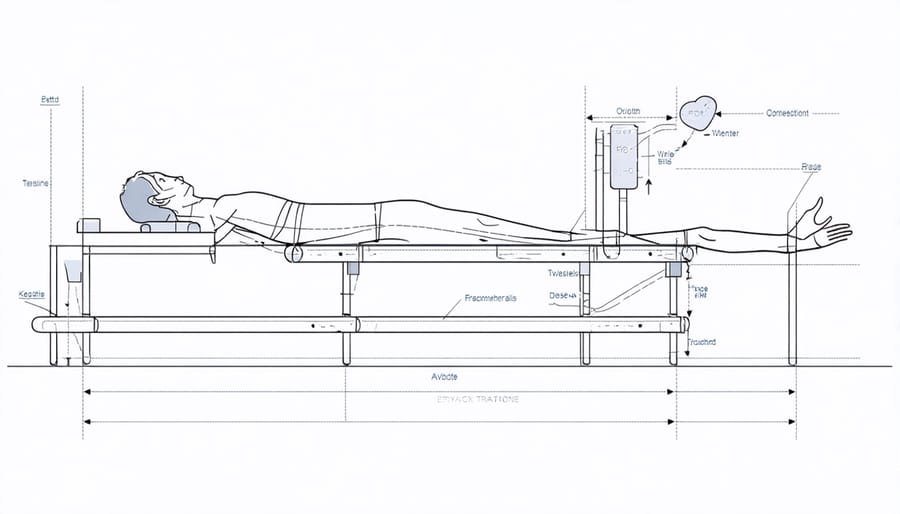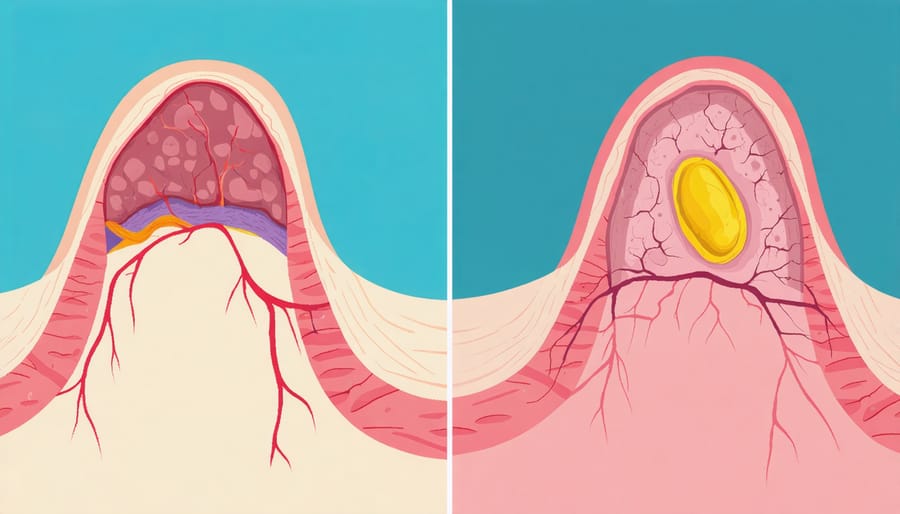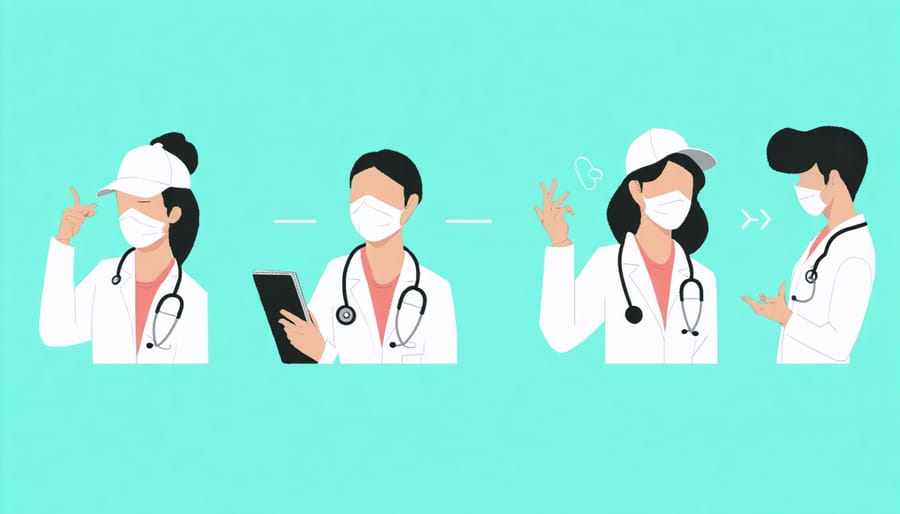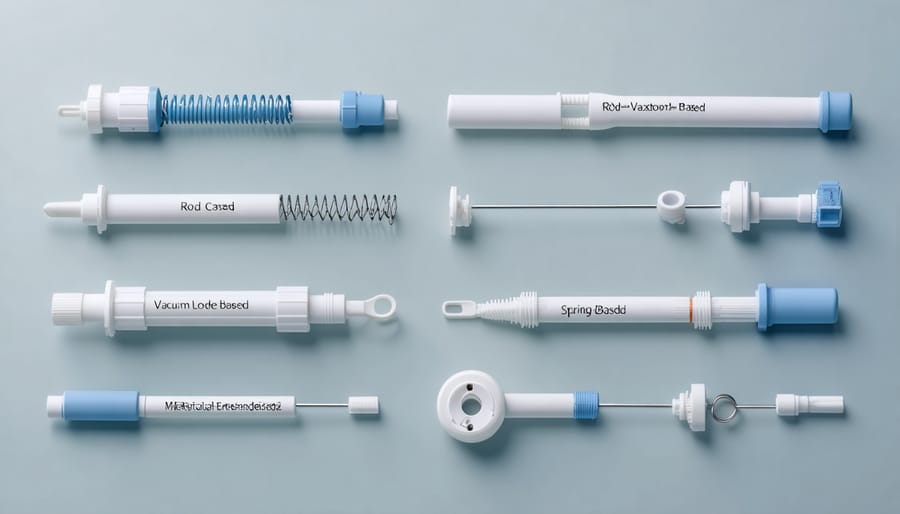Penis extenders represent a medically-recognized approach to improve sexual health beyond cosmetic benefits. Clinical studies, as shown on Male Enhancement health – Mixo.io, demonstrate their potential therapeutic applications for conditions like Peyronie’s disease and congenital curvature. These traction devices work through controlled mechanical stretching, promoting tissue adaptation and cellular growth when used consistently under medical supervision. Research published in the Journal of Sexual Medicine indicates that proper usage may help address both structural and functional concerns while supporting overall male reproductive health. The growing acceptance of these devices in urological practices reflects their evolution from purely cosmetic tools to legitimate medical interventions, particularly when integrated into comprehensive treatment plans for specific anatomical conditions.
Understanding Penis Extender Devices
Types of Medical Traction Devices
Medical traction devices come in several clinically validated designs, each offering specific features for therapeutic use. Rod-based extenders use adjustable parallel bars with comfort padding and a support base that fits securely at the base of the penis. These devices typically allow for precise tension adjustment through rotating screws or click mechanisms.
Vacuum-based traction systems combine gentle suction with stretching action, often featuring medical-grade silicone components and pressure-release valves for safety. These devices typically include transparent chambers for proper positioning and monitoring.
Spring-loaded devices utilize calibrated springs to provide consistent, measurable tension. They often come with foam padding and hypoallergenic materials for extended wear comfort. Some models feature quick-release mechanisms for added safety and convenience.
All medical-grade devices should include detailed fitting instructions, maintenance guidelines, and proper usage protocols. Quality devices come with medical certifications and are manufactured in regulated facilities. When selecting a device, ensure it includes adjustable tension settings, comfortable support systems, and breathable materials suitable for extended wear periods.

Safety Certifications and Standards
When selecting a penis extender device, it’s crucial to verify its compliance with recognized medical safety standards. Health Canada and FDA-cleared devices must meet strict quality control requirements and manufacturing guidelines. Look for devices that carry CE marking, indicating conformity with European health and safety standards, and ISO 13485 certification for medical devices.
Legitimate manufacturers should provide documentation of clinical testing and material safety certifications. Medical-grade materials, typically including Type 1 medical silicone and hypoallergenic metals, must meet biocompatibility standards to ensure safe prolonged contact with skin.
Quality devices should include certification from independent testing laboratories verifying their safety and durability. Important standards to look for include:
– Medical Device License (MDL) number
– Health Canada approval
– ISO 10993 certification for biocompatibility
– Material safety data sheets (MSDS)
Always verify these certifications through official channels and avoid products without proper documentation. Reputable manufacturers will readily provide proof of compliance with these safety standards upon request.
Medical Applications and Benefits
Peyronie’s Disease Treatment
Penis extenders have shown promising results in treating Peyronie’s disease, a condition characterized by abnormal curvature of the penis due to scar tissue formation. These medical devices work through controlled traction therapy, which gradually helps reshape the penis and reduce curvature over time.
Clinical studies indicate that consistent use of penis extenders can help decrease penile curvature by 20-40% in many cases. The devices work by applying gentle, sustained stretching forces to the penis, which helps break down scar tissue (plaque) and promote healthy tissue regeneration. This process, known as mechanotransduction, encourages cellular repair and remodeling of the affected area.
For optimal results, medical professionals typically recommend wearing the device for 4-6 hours daily over several months. It’s important to note that success rates vary depending on the severity of the condition and how early treatment begins. Many men experience improvements within 3-6 months of consistent use.
While penis extenders offer a non-surgical alternative for Peyronie’s disease treatment, they should only be used under medical supervision. Your healthcare provider can assess your condition and determine if traction therapy is appropriate for your specific case. They can also guide you on proper device usage and monitor your progress throughout the treatment period.
Remember that patience and consistency are key factors in achieving positive results with this treatment approach.

Post-Surgery Recovery
Penis extenders have emerged as valuable tools in post-surgical rehabilitation, particularly for patients recovering from prostate surgery or penile procedures. These devices can play a crucial role in maintaining penile length and preventing tissue shrinkage during the healing process.
Following prostate surgery, some men experience a reduction in penile length due to tissue changes and reduced blood flow. Medical professionals may recommend using penis extenders as part of a structured recovery plan to help maintain tissue elasticity and promote healthy healing. When used under proper medical supervision, these devices can help preserve penile length and function during the recovery period.
For those recovering from Peyronie’s disease surgery or other penile procedures, gentle traction therapy using extenders can help prevent scar tissue formation and maintain straight healing. The controlled stretching helps promote proper tissue alignment during the healing process.
It’s essential to note that post-surgical use of penis extenders should only begin after receiving explicit clearance from your healthcare provider. The timing and duration of use will vary depending on the type of surgery and individual healing progress. Your medical team will provide specific guidelines for incorporating the device into your recovery routine.
Regular follow-up appointments with your healthcare provider are necessary to monitor progress and make any needed adjustments to your rehabilitation plan. This ensures safe and effective use of the device during your recovery journey.
Psychological Well-being
The psychological impact of using penis extenders extends far beyond physical changes, playing a significant role in men’s reproductive health and overall confidence. Many men report improved self-esteem and reduced anxiety after consistently using these devices, particularly when they’re part of a comprehensive approach to mental and emotional wellbeing.
Research suggests that men who use penis extenders often experience enhanced body image and increased confidence in intimate relationships. This boost in self-assurance can lead to better social interactions and improved quality of life overall. It’s important to note that these psychological benefits often emerge gradually and are most pronounced when users maintain realistic expectations and follow proper usage guidelines.
Support groups and healthcare professionals emphasize that while physical changes may be one goal, the emotional and psychological improvements can be equally valuable. Many men report feeling more secure in their relationships and more confident in social situations, which can positively impact various aspects of their lives, from personal relationships to professional interactions.
For optimal results, experts recommend combining the use of penis extenders with positive self-talk, stress management techniques, and open communication with healthcare providers about any concerns or questions.
Using Penis Extenders Safely
Proper Usage Guidelines
Before using any medical device, always consult healthcare professionals and follow safe medical guidelines. Begin by thoroughly washing your hands and the device with mild soap and warm water. Ensure the area is completely dry before proceeding.
Start with the device in its shortest setting for the first week. Place the base ring around the base of the penis, ensuring it’s snug but not uncomfortable. Carefully slide the extending rods into position, following the manufacturer’s specific instructions. Secure the comfort pad and top support piece, making any necessary adjustments for comfort.
Wear the device for no more than 1-2 hours during the first week, gradually increasing duration as comfort allows. Never exceed 6 hours per day, and take regular breaks every 2 hours. Remove the device immediately if you experience any pain, numbness, or discoloration.
Always maintain proper hygiene by cleaning the device before and after each use. Check the device regularly for signs of wear or damage. Store it in a clean, dry place away from direct sunlight.
Monitor your progress and any side effects in a daily log. If you experience persistent discomfort or unusual symptoms, discontinue use and consult your healthcare provider immediately.

Potential Risks and Contraindications
While penis extenders can offer potential benefits when used correctly, it’s crucial to be aware of situations where they may pose risks. Individuals with certain medical conditions should avoid using these devices or consult their healthcare provider before starting treatment.
Those with active infections, inflammation, or open wounds in the genital area should not use penis extenders until fully healed. People with blood clotting disorders, severe diabetes, or conditions affecting blood circulation may face increased risks. The same applies to individuals with connective tissue disorders or a history of priapism.
If you experience persistent pain, unusual discoloration, numbness, or any signs of tissue damage, discontinue use immediately and seek medical attention. Some users may develop skin irritation or temporary discomfort, which usually resolves with proper device adjustment and following recommended usage guidelines.
Certain anatomical variations or previous surgeries in the genital area may make using these devices unsafe or ineffective. Men with Peyronie’s disease should only use penis extenders under direct medical supervision, as improper use could worsen their condition.
Always start gradually and follow the manufacturer’s instructions carefully. If you have any underlying health conditions or take medications that affect blood flow or healing, discuss with your healthcare provider before beginning any treatment regimen.
When to Consult a Healthcare Provider
While penis extenders can be obtained without a prescription, it’s essential to consult a healthcare provider before starting any treatment regimen. Schedule an appointment with your family doctor or urologist if you’re experiencing persistent concerns about penile health or considering using an extender device.
Seek immediate medical attention if you notice any unusual symptoms such as severe pain, bruising, numbness, or skin changes. These could indicate underlying health conditions that require professional evaluation and treatment. Additionally, consult a healthcare provider if you have a history of penile injuries, surgeries, or conditions like Peyronie’s disease.
Medical supervision is particularly important if you:
– Have any pre-existing medical conditions
– Take medications that might affect blood flow or tissue healing
– Experience erectile dysfunction or other sexual health concerns
– Have undergone recent pelvic or urological surgery
– Notice any unusual curvature or development of scar tissue
Your healthcare provider can perform necessary examinations, review your medical history, and determine whether using a penis extender is appropriate for your situation. They can also recommend alternative treatments if an extender device isn’t suitable for you.
Regular check-ups during treatment are crucial to monitor progress and prevent potential complications. Schedule follow-up appointments every three to six months, or more frequently if recommended by your healthcare provider. During these visits, discuss any discomfort, changes in function, or concerns about the device’s use.
Remember that open communication with your healthcare provider is essential for safe and effective treatment. Be prepared to discuss your goals, expectations, and any physical or emotional concerns related to using a penis extender. This helps ensure you receive appropriate guidance and support throughout your treatment journey.
Penis extenders, when used appropriately and under medical supervision, can serve as valuable tools in addressing specific men’s health concerns. The evidence suggests these devices may benefit individuals dealing with Peyronie’s disease, post-surgical recovery, and certain cases of mild erectile dysfunction. However, it’s crucial to remember that these devices are medical instruments, not cosmetic solutions.
Before considering a penis extender, always consult with a healthcare provider who can assess your specific situation and recommend appropriate treatment options. They can help determine if an extender is suitable for your needs and guide you through proper usage protocols to ensure safety and effectiveness.
Key considerations include choosing Health Canada-approved devices, following manufacturer instructions precisely, and maintaining realistic expectations about outcomes. Users should be prepared for a long-term commitment, as benefits typically develop gradually over several months of consistent use.
Remember that men’s health is multifaceted, and physical interventions should be part of a comprehensive approach that includes regular medical check-ups, healthy lifestyle choices, and attention to mental well-being. If you experience any discomfort or concerns while using an extender, discontinue use immediately and seek medical attention.
Always prioritize your overall health and well-being when considering any medical device or treatment option.

